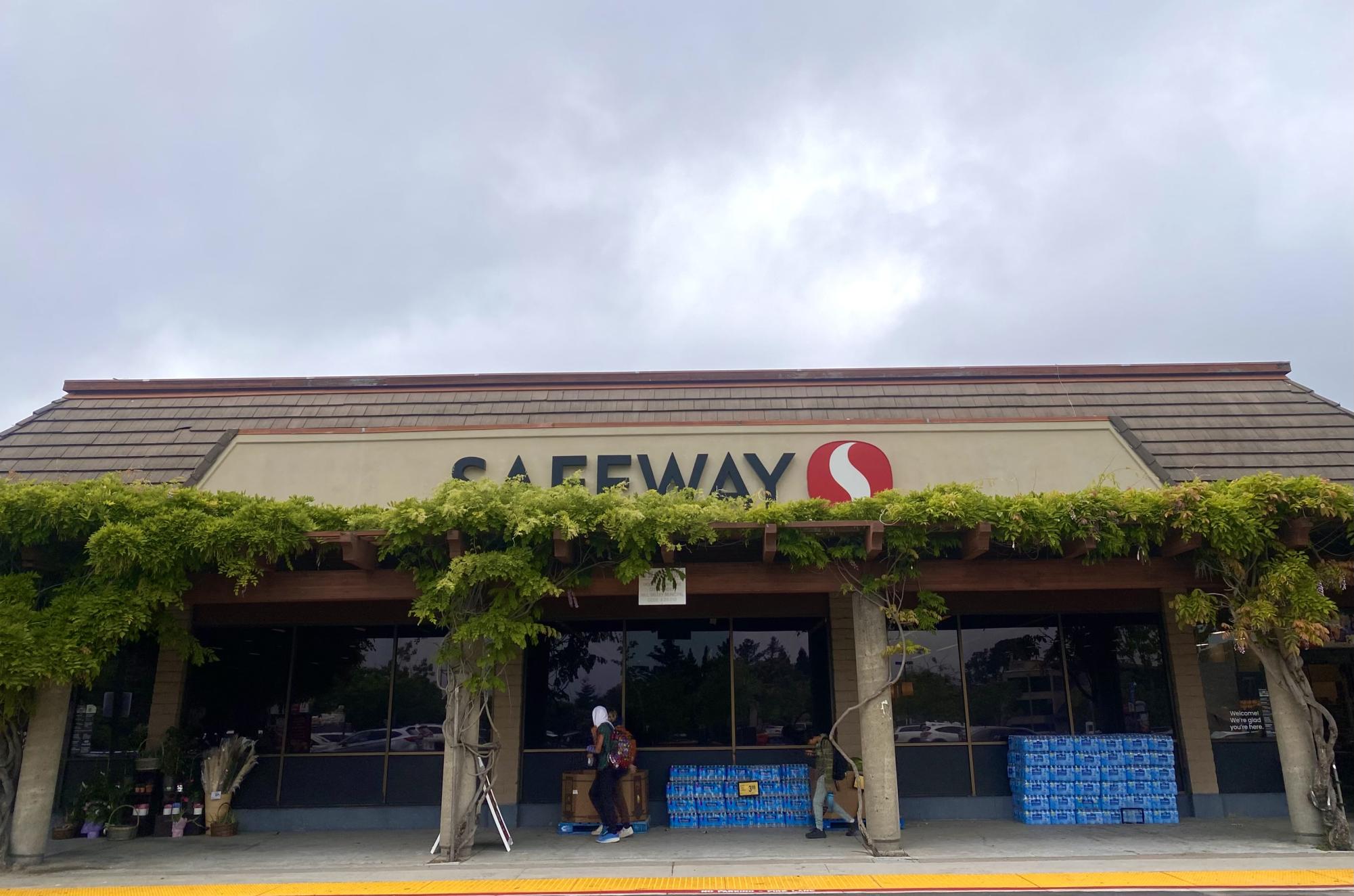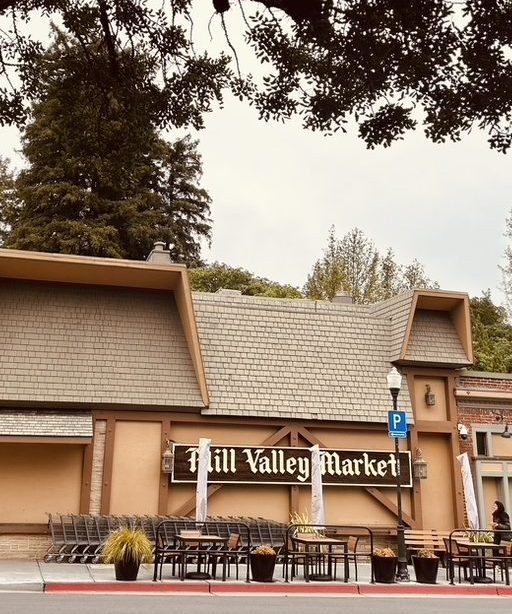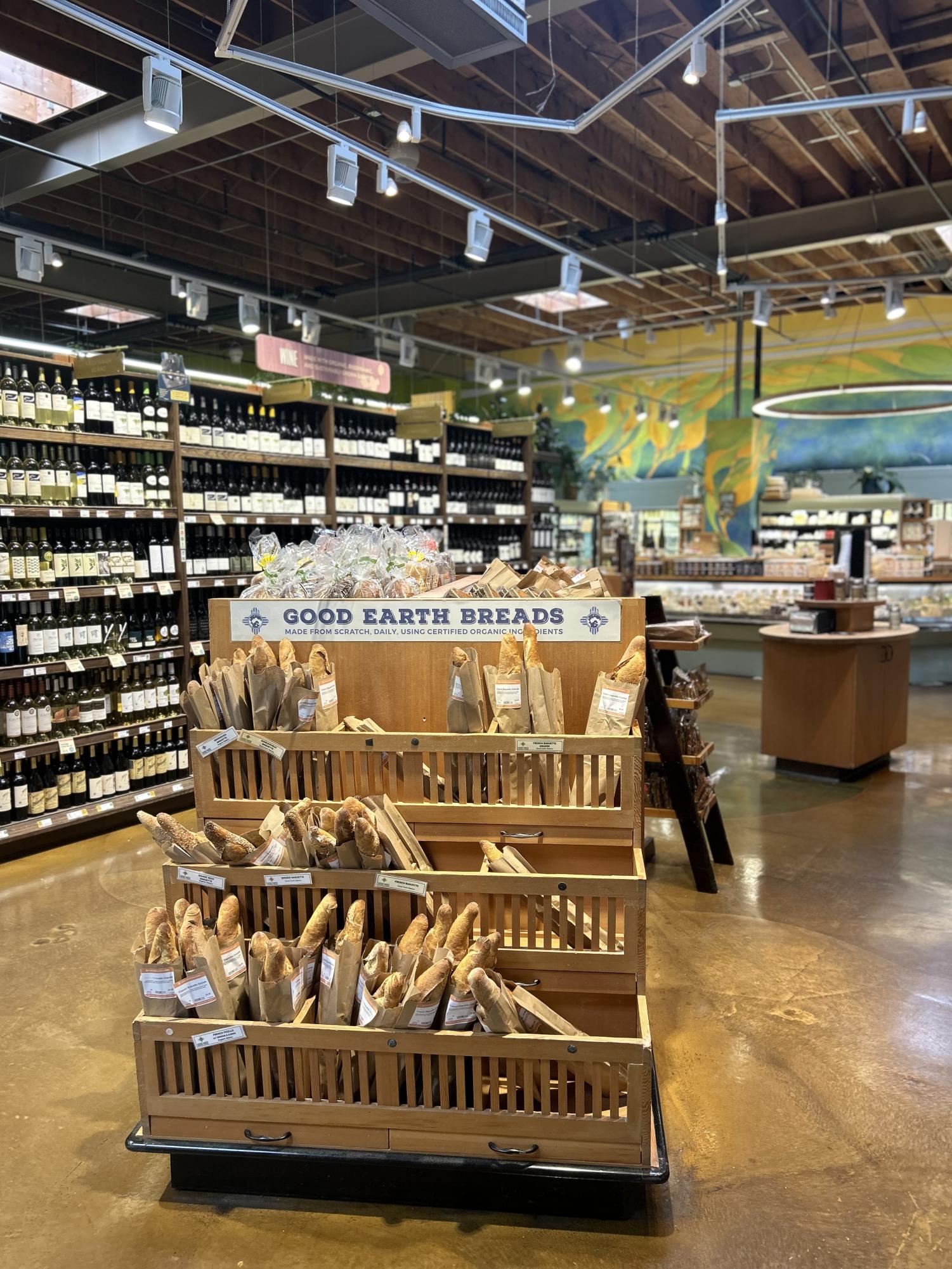Marin County is ranked one of the top 10 wealthiest counties in the country, according to U.S. News. It has a median household income of about $131 thousand, which is over double the national median household annual income of about $59 thousand per year. Additionally, according to the US Census, 7.7 percent of the county lives under the poverty line.
Yet, local businesses experience customers stealing daily. Theft is commonly associated with economically disadvantaged communities, with the logic that people in need and unable to afford necessities resort to stealing. However, in such a predominantly wealthy area as Marin County, theft is very common.
“We always find tags hidden behind the mirrors and under the stools in the changing rooms, or even in the pockets of other clothing. I rarely actually see it happen, but it’s usually teenagers who steal,” Proof Lab employee Dahlia Tymoff said.
Prooflab, a local Marin County business with locations in Mill Valley and San Rafael, sells surfboards, skateboards, clothing, and other outdoor equipment. Within the Mill Valley location, there is the station and the surf shop, both sell outdoor wear.
Proof Lab, in many ways, encapsulates a laid back and relaxed atmosphere. It has sales racks outside and an open door policy, and many of the items are without censors. However, Proof Lab, according to Tymoff, experiences frequent theft, along many other businesses in the area, which reflects a seemingly growing trend in Marin County.
According to an anonymous survey conducted on 35 random Tamalpais High School students, over 60 percent admitted to having stolen before. 30 percent reported that they have stolen over five times and 13 percent report that they steal on a weekly basis.
Out of our sources who admitted to stealing, only one did not request anonymity. Multiple students explained that they tend to avoid small, local businesses, and instead target large corporations with the logic that wealthier businesses/chains won’t be as heavily affected.
A junior at Tam High, one of many who requested to remain anonymous, explained their reasons behind stealing.
“I don’t feel bad because they are big big corporations that get a lot of money. It’s not like I am going on $800 shopping stealing sprees, I just steal necessities like skincare and food,” the student said. “Also, it is not affecting small businesses because I have never stolen from a small business. That is messed up.”
Various local businesses in Marin claim that teenage theft in the area is existent and prevalent.
Doug Canepa is the manager of Mill Valley Market, a local grocery store in downtown Mill Valley.
“It happens more than we know, and it is a big concern of ours. Is it any group in particular? Well, we find at lunch, highschoolers grab their sandwich, and they walk out. I think they have the impression that, ‘well I can just get away with it,’” Canepa said.
Canepa said that teenage theft does not largely take a hit to their revenue.
That’s not the case for all local businesses. The Makers Market is a small business in Mill Valley that opened a few years ago. Described as a gift shop, it sells an assortment of candles, jewelry, clothing, and more. Employee Aja Foster said their biggest source of theft undoubtedly comes from teenagers.
“We notice stealing happens much more frequently in the summer when high schoolers get out of school. They steal small things they can pocket, mostly rings or bracelets,” Foster said. “For us and a lot of similar businesses around here, there’s little space in our revenue to lose something. So anything that we lose does hurt us.”
Urban Outfitters, a large chain brand that sells clothing, decor, and accessories, has a location in Corte Madera that employees claim frequently experiences theft.
“I see it happen every single day. Without fail, a teenage girl will walk in here, peel off a censor from a perfume or necklace or something, and walk out,” Urban Outfitters manager Macy Weschter said.
In addition to Urban Outfitters, the Target located in Marin City has many encounters with theft.
“I get middle schoolers who take food and candy, and from there the stealing just goes up. Adults will take home appliances and high schoolers will take sports gear and cosmetics,” Branden Oropeza, the executive team leader for asset protection at Target, said. “The big thing is that because high schoolers are underaged, it is more difficult to pursue and essentially stop theft, because there is a gray area of calling the police, but then also having to get their parents involved.”
Another business that experiences frequent theft is Brandy Melville, a women’s clothing store located in San Francisco.
“It was honestly shocking to see the amount of teenage girls just putting things into their bag, with no shame whatsoever,” An employee at Brandy Melville, Celia Clark said.

Safeway is an additional brand that experiences local theft, with great frequency. The theft rates got so alarming according to the management at the Mill Valley location that in early 2022, Mill Valley Safeway hired a security guard to monitor stealing. Charles Mcclanah
“I see theft everyday, mostly between lunch time and on average about 15 people a day, and pretty much always highschoolers. We work with the school, so we try not to call the police and directly call the school,” Charles Mcclanah, the current Safeway guard said.
Theft among teenagers is common in Marin County, within both local businesses and larger corporations. The reason behind it is complicated to understand, given the demographic of the area.
“It’s honestly because I know I will get away with it. No one calls the police. If anything, I’ll just get a warning,” Marina McGowan, a junior at Tam, said.
Canepa, the Mill Valley Market manager, explains the Mill Valley Market protocol when a student is caught stealing. “We will stop them, we will call a parent, and explain what happened. After multiple warnings, we will call the police.”
McGowan further reflected on her experience at Mill Valley Market. “I’m not proud of my actions. After I stole from Mill Valley Market, they just gave me a warning and said to never come back. I’ve been back multiple times since.”
According to Canepa, one reason behind these theft instances is due to an underlying lack of respect for authority. Seemingly, teenagers and young adults in the area do not feel that they will be held accountable, because they rarely are.
“We don’t get called in about many small cases of theft like with teenagers at lunch. We mostly just deal with gang groups targeting the same places over and over again. I’m not saying that theft among teenagers isn’t common, trust me, it is. I’m saying that most stores and businesses don’t involve us with that,” Scott Buer, a police officer in charge of patrol duties of the Marin Police Force, explains.
Unfortunately for local businesses in the area, there seems to be a notion in place that involving the police in minor cases of theft is not worthwhile. This notion could, however, perpetuate the theme of entitlement surrounding teenagers in the area.
This trend of little to no police involvement in teenage theft isn’t the case in all other parts of the country.
One Tamalpais High School student who chose to remain anonymous, was visiting their family for the summer in New Jersey when they got caught shoplifting at a Sephora. They had pocketed beauty items that culminated to over $100. The authorities were immediately called and she faced threats of being sent to juvenile detention. They ended up having to serve 50 hours of community service.
“I was shocked I got caught in the first place. I’ve shoplifted so much at home I thought I had the tricks down,” the student said. They then expressed further shock at the punishment they received. “No one gets in trouble in Marin, at least not real trouble. If I knew the punishment would be so great I wouldn’t have done it in the first place.”
There are some cases where teenagers stealing is not as common.
Good Earth Natural Foods is a local grocery store that was founded over fifty years ago. The store began in Bolinas, and now has locations in Mill Valley and Fairfax. At Good Earth, foods are grown and prepared using a minimum amount of processing and no chemical pesticides, herbicides, or additives, according to it’s website. Because the store provides high quality food, the prices are slightly higher than other nearby grocery stores like Whole Foods and Safeway. Good Earth has a reputation as a very high-end market. Although prices are higher, Good Earth employee Lucca Hurst-Schalit explains that stealing is not a common occurrence at Good Earth.
“Stealing is pretty rare. Honestly, the only time it is really brought up is during the lunch rush when all the highschoolers come in because that is probably the main group of people that steal. The food managers warn us to watch out for the highschoolers and see if any of them are walking out without paying,” Hurst-Schalit stated.
Good Earth is significantly more expensive than the local grocery stores and retail brands like Safeway and Target. It is also the only brand out of those interviewed that saw a little rate of theft. Teenagers in the community may be less inclined to steal from a brand with high prices, because the risk may seem greater, Hurst-Schalit explains.
The underlying cause of theft among teenagers in Marin County, being such a predominantly wealthy area, remains unclear. The fact that most of these young adults are highly economically advantaged might be an indicator of entitlement. It also might be the reason for the lack of authoritative measures being taken against the crimes. Being significantly wealthier than the average American seems to grant the community looser regulations on theft.
Although the cause cannot ultimately be pointed at any single factor in particular, the issue is clearly extremely prevalent, and is increasingly harming local businesses. It is up to the Tam community to take accountability and put an end to this ongoing theft, for both small and large businesses.












